Tapps of Crawford County Arkansas

21st Century Flag of Wicocomico Indian Nation
The first phase of this journey will be told with respect to the individual men of our Tapp
line, going back as far as I have names for them. Though we probably never will know the
names of earlier men, there is still quite a story to tell of those times. The second
phase will take our line back to pre-Columbian America, and how the line's Y-chromosome
tells us where they came from before the advent of human civilization. The final phase
will cover the rest of the family tree of Mattie Tapp, my great-great grandmother, through
all of her great-great grandparents. Keep in mind that most of them lived their lives
before the Revolution, and records become sparse.
I feel very privileged and excited to tell this most-American story in my family tree. I
will show how our Tapps descend from not only a Native American tribe, but from its chief
the Taptico. The surname Tapp was adopted because it suited as a tribute to Taptico, and
was familiar as an English surname. I've seen lots of records appear in my Tapp searches
in England itself, but I've found no European Tapps in my investigations of ours. Now, no
one in my immediate family has measurable Native American ancestry in our autosomal
ethnicity reports. But our first Tapp forefather was many generations ago. I'll make a
calculation of just how much Taptico we should have, once I've laid out our Tapp path.
So, let's begin.
From the Taptico to Us
As was told in the McAtee document, George Cornelius McAtee wed Martha Ann "Mattie" Tapp
in Crawford County. She predeceased him and is buried in the same plot of the same
cemetery, just down the street from my cousin in Fort Smith Arkansas. Researching the
Tapps in general, I've found that many lived in Arkansas, and at the same time as Mattie.
I'm certain that she knew them. See a photo below of a cousin of the same name, Martha
Ann Tapp. She was born 1874 in Crawford County. I have no photo of our Mattie to compare.
But to give a feel for the Tapp influence on a person's appearance, check out the next
photo of Perry Tapp, who died in France during World War I. Our Mattie named one of her
sons Joseph Perry, and I don't think it was a coincidence. Below that photo is one of my
grandfather and Tapp descendant Paul McAtee. We didn't suspect (before I worked on McAtee
genealogy) that McAtee was a source of Native American DNA in our family, so you might see
why. Maybe there's some similarity. But one has American Y-DNA and the other Irish.
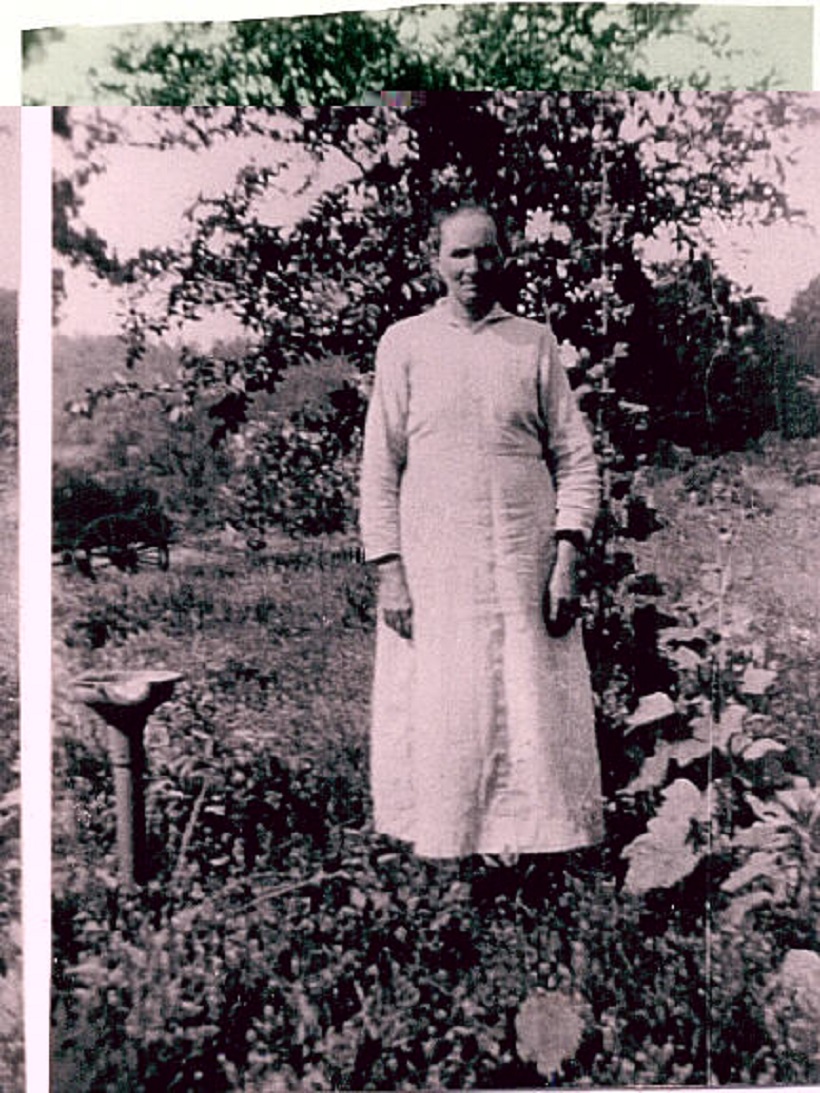
Martha Ann Tapp of Van Buren, cousin of Mattie Tapp
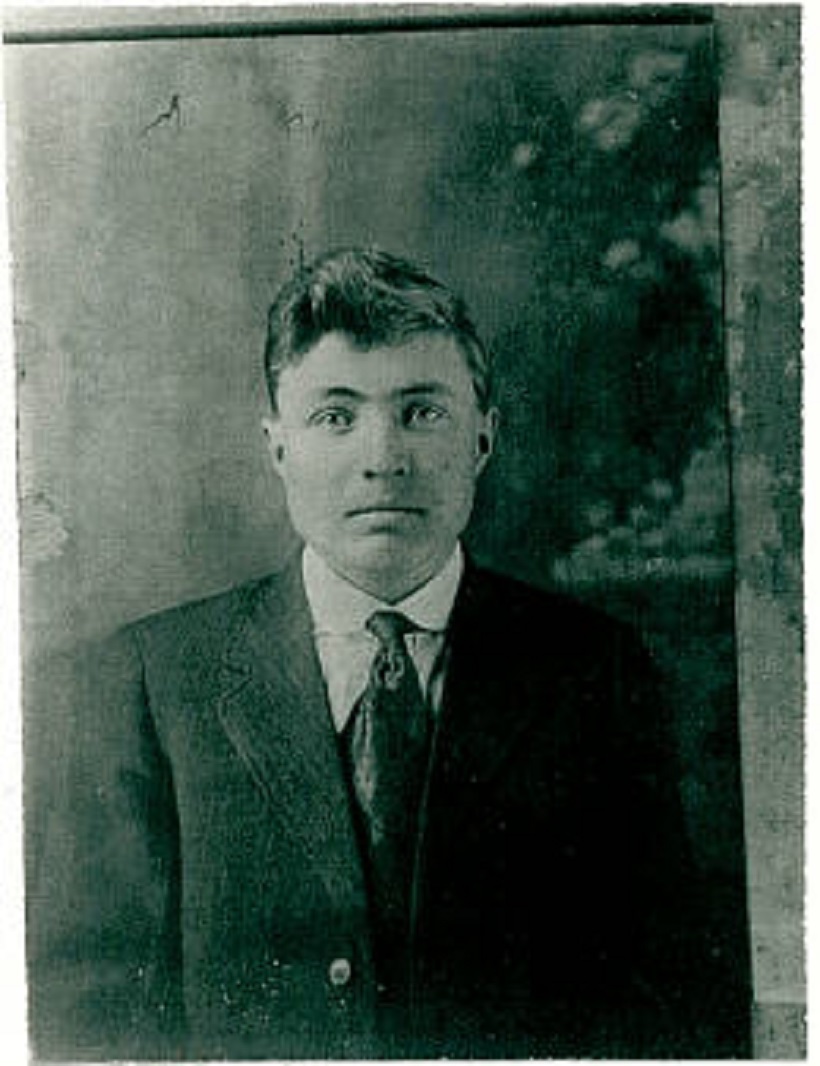
Perry Tapp, 1913

Paul McAtee
Mattie was born 1858 in Walker County Georgia. Her father was Curtis S Tapp, born 1830
in Franklin County Georgia. Curtis S wed Mary Elizabeth Tapp 1853 in Chattooga County
Georgia. Notice that her maiden name was Tapp. It's no mistake. They were cousins.
Curtis S and Mary were my third-great-grandparents. They combine genetically to be one
great-great-grandparent in effect. Sorting this out was complicated by the existence of
another Curtis Tapp in Georgia who wed a Mary Elizabeth Cornelson and also moved to
Arkansas. But the truth is documented in the census and other records, as well as DNA.
Mattie represents the time our Tapps were in Arkansas, which was almost 60 years. Before
Curtis S brought the family to Crawford County, he served in Company I of the Georgia 60th
Infantry in the Civil War. They mustered on the 6th of May in 1862. The company fought
at Antietam and Gettysburg and surrendered at Appomattox. But Curtis wasn't with them
until then. At the battle of Mine Run in Virginia he was injured. He must've been shot
in the leg, because he had to have one amputated. Evidently he got medical care from the
Union, because he became a prisoner of war and was released on the 21st of May in 1865.
Apparently wheelchairs did exist back then, but even so I wonder how he managed on one leg
for the rest of his life.
Curtis S's father was Willis Tapp, born 1800 in Spartanburg County South Carolina. Mary's
father was Curtis W Tapp, born 1805 in Spartanburg. It was fortunate from a genealogical
perspective that Curtis S and Mary were in their parents' households in the 1850 census,
as they could've gotten married a year earlier and been much more difficult to connect to
their parents. But tracing the two paths backward still runs into the pre-1850 census
barrier, which hits our Tapps particularly hard. There were lots of Tapps in the same
places and times with the same names. The Tapps are interesting to researchers based on
their origin, so books have been written about the genealogies. But they're riddled with
errors. I didn't realize how bad it was until Ancestry.com's DNA ThruLines helped
tremendously to clear it up.
Before we had ThruLines, by census records I guessed that Willis and Curtis W were brothers.
Even so, no one had any South Carolina Tapps as their parents. One of them had to be, and
I chose Elias son of Vincent, assuming that a relative lack of descendants of Elias was
because no one had done work on my particular connections before. But although I never
found a Tapp in South Carolina who didn't seem to descend from Vincent, it still left open
the door that maybe our Tapps were really just English and not descendants of the Taptico.
We're just another bunch of white people in the southern US with Pocahontas syndrome, right?
But I was confident we did descend from the Taptico. Thankfully, ThruLines has helped to
firm everything up with scientific evidence. ThruLines doesn't have Elias as Willis's
father. It clearly shows cousins merging with us at Elias's brother Moses, who's actually
a well-known descendant of the Taptico in South Carolina. Moses was born 1758 in Culpeper
County Virginia. I hadn't chosen Moses as the father because no one has Willis in Moses's
list of sons. But DNA points clearly to it being true.
I trace cousins independently to his children Elizabeth, William, and John. I also trace
cousins to his father Vincent. For Curtis W, ThruLines connects us to John W, who was also
Moses's son, through John's children William, Leonard, and Elizabeth. John W was born
about 1780, probably in Spartanburg County South Carolina. It turns out that John W and
Willis were half-brothers. John W's mother was Elizabeth Thornton and Willis's mother was
Moses's second wife, Mary Bache. Our Tapps left South Carolina
before 1830 and were in Georgia for 40 years. Moses probably left Virginia around 1780 to
start his own family, so our line was in South Carolina for about 50 years. For more
perspective on the Tapps, see the photo below of relative James Tapp. I've seen him
attributed as a brother of Moses, but Moses died many decades before photography was
invented. James might've been a brother of Willis and John W. Moses was categorized as
white in the censuses he was enumerated in. There's no evidence the Tapps were slaveholders.
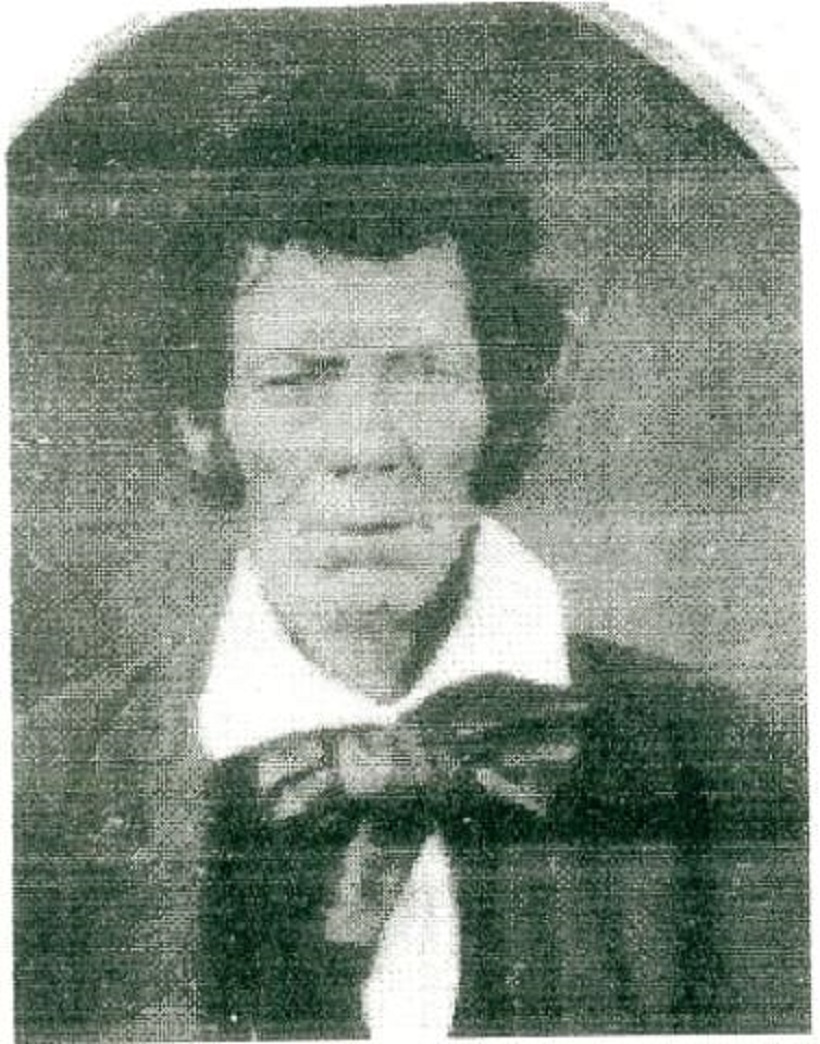
James Tapp
Moses's father Vincent is very well-known as a descendant of the Taptico. Vincent was
born 1722 in Richmond County Virginia. ThruLines connect us to cousins independently
via Vincent's children William, James, and Sally. This is verifiable proof of Mattie's
descent from Vincent. Vincent was a private in captain Stephen Asby's 12th Virginia
regiment, commanded by colonel Jason Wood. Vincent enlisted on the 10th of October
1776. He was transferred in 1778 to colonel John Neville's company of the 4th and 8th
Virginia regiments commanded by colonel James Wood, and was discharged on the 10th of
October 1778.
The Taptico and the Wicocomico
The history of the United States regarding the Peoples who lived here before it was
founded, is not one to take a lot of pride in. It's human nature to gloss over the
unpleasant parts of one's past. It's important for a person to love one's country if one
is to defend it when it needs defending. I'm not opening this can of worms just in the
defense of our Tapps, but in the knowledge that the vast majority of our ancestors were on
the other side. The vast majority of our ancestors trace back to early Virginia. And
there are valid excuses to make in their defense. They came to America to make a better
life. They came for a piece of land to call their own. On the other hand, some were in a
position to forge no small amount of wealth out of it. Many purchased human beings to
serve as farming machines, basically.
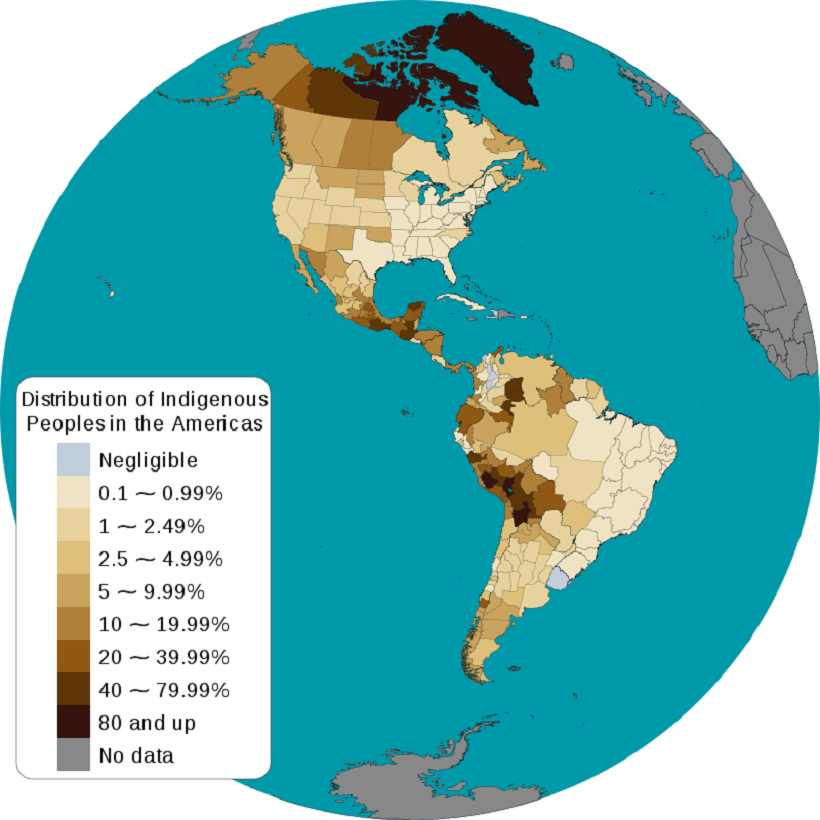
The single most devastating thing the Europeans did to the Natives was bringing disease.
It wouldn't be fair to say they were completely innocent in it, as it was purposefully
leveraged at times, but it would've had a dramatic effect either way. My general view is
that it takes special dedication, over many generations, for the convergence of two
disparate cultures like that to not end in one side losing in a big way. But the English
and especially the United States, were despicable when it came to making treaties with the
Natives and then betraying them, over and over again. Look at the map above for an
illustration of how bad it was in the formative years of the United States. Notice how
the entire eastern half of the country was cleared out of Natives. Parcels of land that
were set aside for reservations didn't have to be renegotiated to the other side of the
Mississippi. But that's our history. And the Tribes of Virginia are a perfect case study.
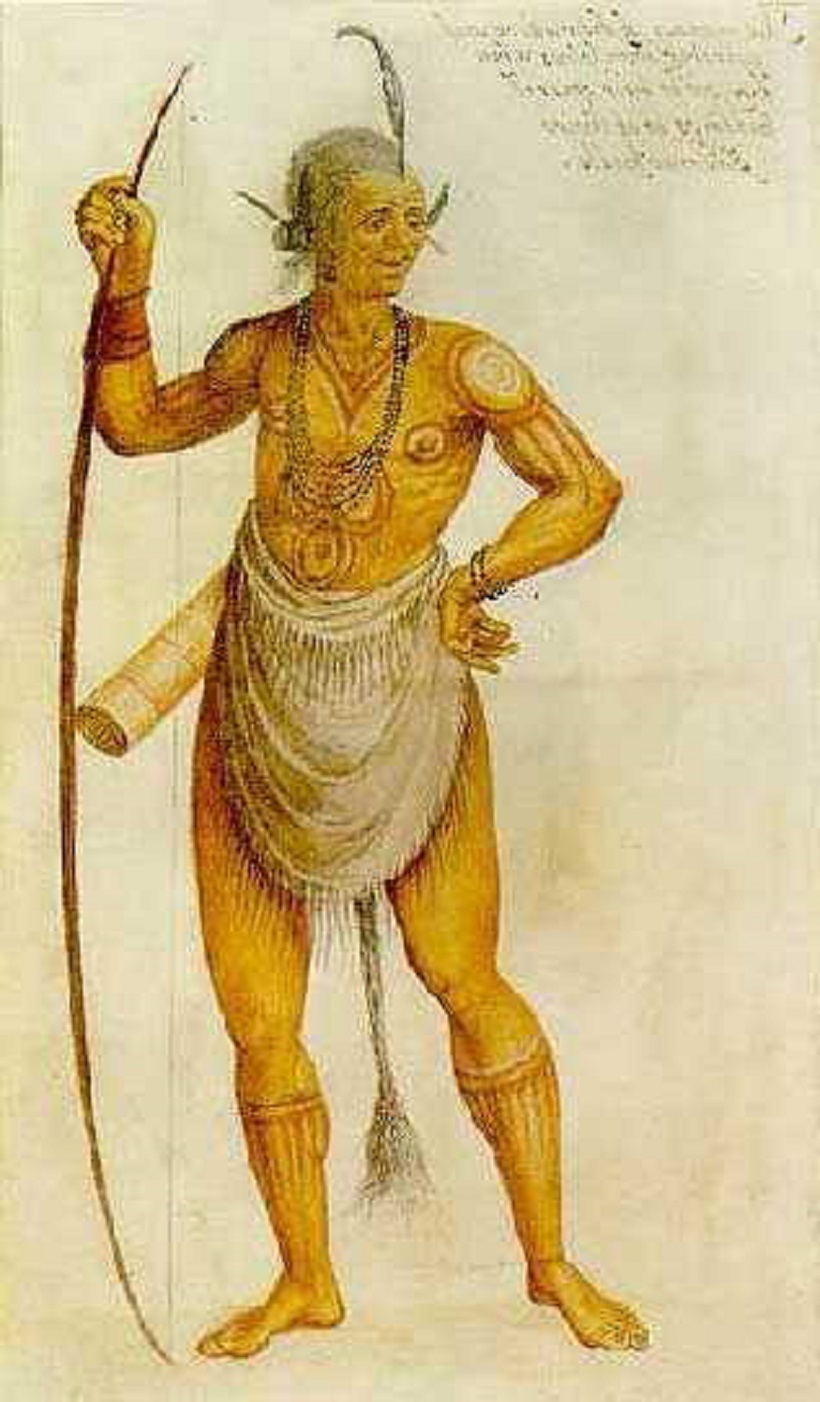
What a Wicocomico warrior would've looked like, contemporary illustration
Vincent Tapp was born at a time that evidenced what came before. In 1652, his forefather
the chief of the Wicocomico, had his lands surveyed. He resided in Northumberland County
on the southern side of the Potomac. Note that our ancestor John Hallowes made his home
in the same land and very likely traded directly with the Taptico.
Based on the number of warriors in the Taptico's tribe, he was
allotted 4400 acres via treaty with the Virginia government. By 1719, only 1700 acres
remained. The treaty had not been renegotiated. Basically, the Wicocomico weren't able
to keep it because their numbers continued to dwindle and Virginia took advantage by
giving the land to settlers piece by piece. But our Tapp line wasn't even with the
tribe anymore by 1719. I'll explain how that came to be.
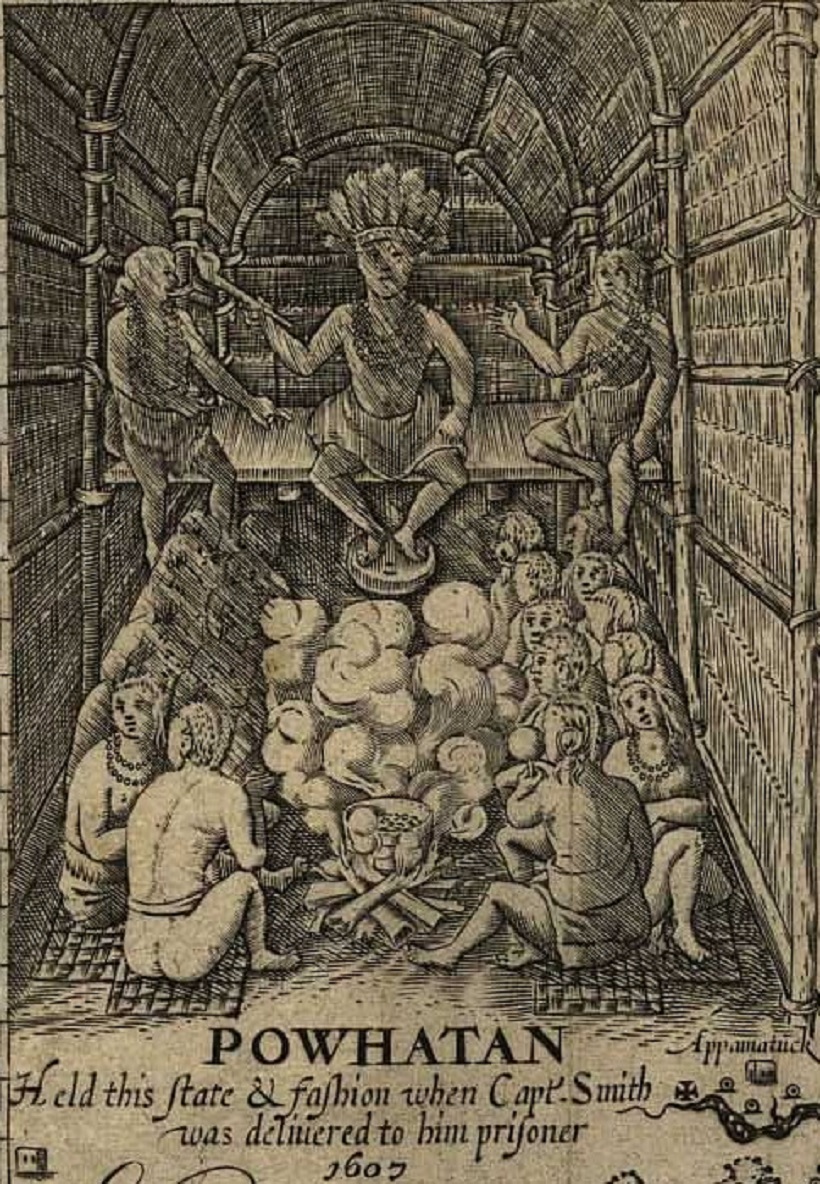
The Wicocomico were one of the tribes that were allied under the Powhatan, the name of
the biggest chief the English first met, and the English gave that name to all the allied
tribes in their entirety. If you've ever learned of Virginia history, you've heard of
them. Pocahontas was the daughter of the Powhatan. The Wicocomico ranged between the
Northern Neck of Virginia and Maryland, on both sides of the Potomac. The chief of the
Powhatan resided closer to Jamestown, probably in the vicinity of modern Richmond.
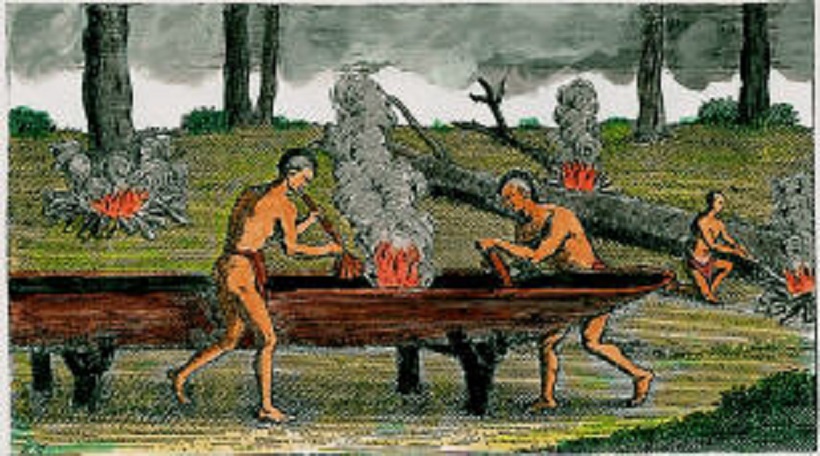
Illustration of Powhatan canoe carving - canoes were their primary means of transportation
The English got off to a bad start with the Powhatan. The English had an encounter with
the Spanish just before the establishment of Jamestown which had them on edge, and they
fired shots at the Powhatan on their first landing. Deaths occurred within the first two
weeks. In 1607 between 14,000 to 21,000 Natives lived in eastern Virginia. The Powhatan
themselves called the area the "densely populated land". But by 1677 only 5% of those
people remained. No wonder the Wicocomico couldn't keep the land alotted to them. And
they'd been forced to merge with another two tribes onto that land in the first place,
south of the Great Wicocomico River. They were moved out of Maryland entirely by 1697.
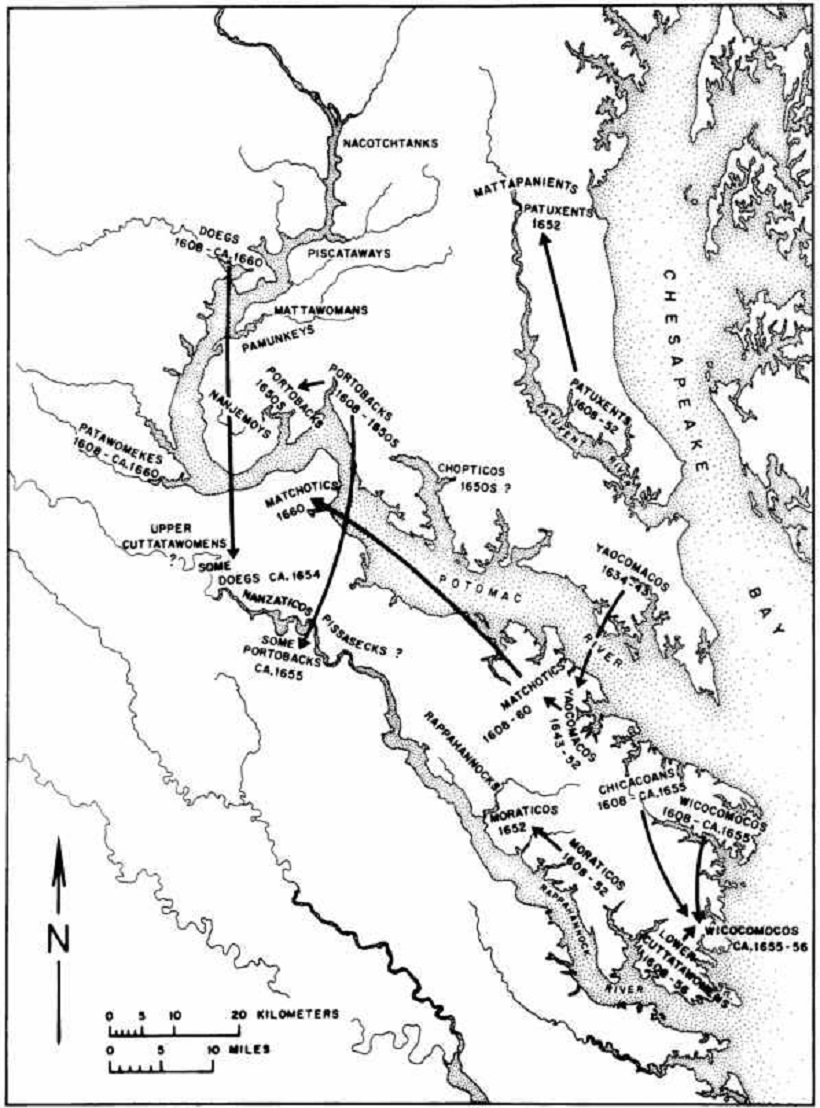
Displacement of Powhatan Tribes
Here's the story of our line in particular. A man named Machywap was born in the 1630s.
According to the book Commoners, Tribute and Chiefs, Machywap was chief of the Chicacoans, a
tribe that was merged into the Wicocomico, apparently during Machywap's lifetime. They were
assigned a reservation of 4400 acres near Dividing Creek south of the Great Wicomico river.
The name Weroance was used for the leader of each tribe of the Powhatan confederation.
There's a book called Life on the Borderlands of the Colonial Potomac: Exploring Chicacoan,
of which the summary says that before the merger with the Wicocomico a John Mottrom acquired
land from Machywap to establish a settlement in the Northern Neck which Mottrom called
Chicacoan after the tribe. Ingle's Rebellion was plotted there. Machywap is claimed in the
wikipedia article on the Wicocomico to have been a friend of John Smith. A battle occurred
on the reservation called the Battle of the Wilderness. I've not found anything else about
it, because a Civil War battle had the same name and dominates search results. But I believe
this occurred in 1646 and left the ground so littered with bodies that the reservation was
abandoned. The original Powhatan chief was dead and the alliance was over. In a meeting
with the Virginia government in 1655, the English declared Machywap the Taptico, the chief of
what remained of the Wicocomico confederation. The tribe itself favored another man, but the
English would only grant that person the title Great Man. The Wicocomico responded by
banishing Machywap in 1659.
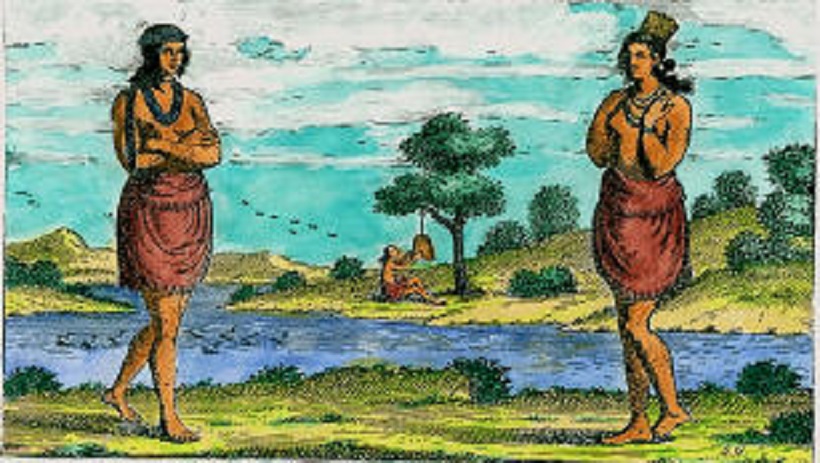
Dress of Powhatan women
Machywap went then to live amongst the white settlers, maintaining a high status with them,
and his descendants wed English women. There's some contention over whether his own wife
was English or merely took on an English name. I assume the latter for the purposes of
estimating the amount of Native ancestry in subsequent generations. Machywap himself took
the name Thomas. His son William was born in 1664. William took on the title Taptico from his
father, which gave him rights under Virginia law to what wealth the Wicocomico possessed.
William's son was William Taptico, born in the 1680s. His son William Taptico was born in
1707.
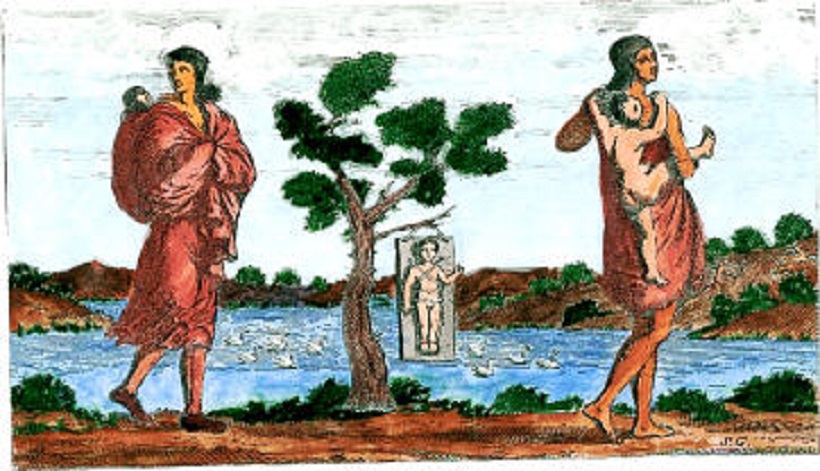
Powhatan women strapped their toddlers to planks "until their bones hardened"
When William III died in 1719, the English didn't appoint a successor to the title of Taptico.
The surviving Wicocomico had dispersed and were no longer a tribe. William III is said
to have had substantial wealth, but I would guess it amounted to no more than a relatively
well-off planter of the time. William III's wife Elizabeth settled his estate, signing
the beginning of the document as Elizabeth Taptico, and by the end she put it as Elizabeth
Tapp, establishing the form of the name from then on, naming her son William Tapp. Vincent
was a son of William, thus completing our line from Mattie to Machywap.
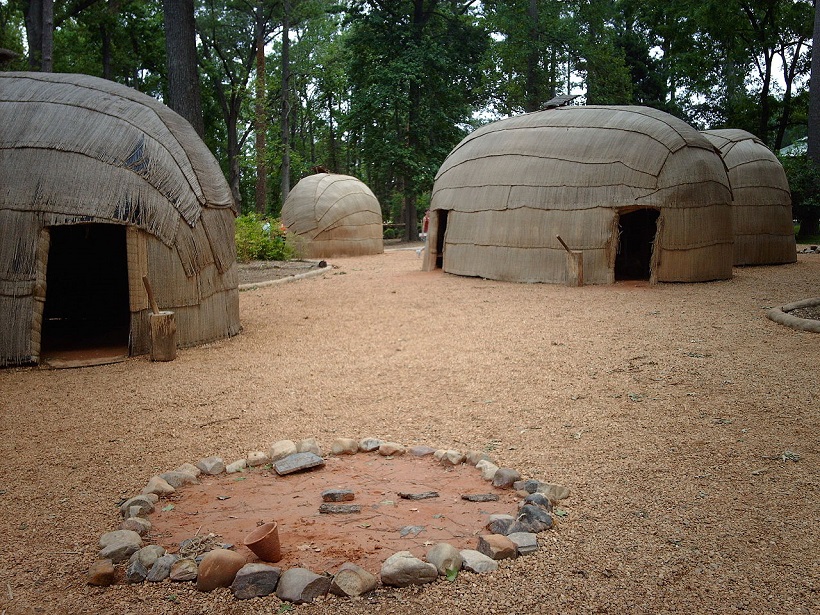
Powhatan dwellings, re-created today at Jamestown Village
Let's calculate now how diluted the Tapp DNA has become to reach us. Each person is born
with 50% of their DNA from each parent. The percentage is really a probability that you'll
inherit an ancestor's DNA. With each generation the percentage is halved, and once it
approaches 1% it becomes unlikely that you inherited DNA from that individual person. So,
you get about 25% from each grandparent, 12.5% from each great-grandparent, etc. Machywap
Taptico was my tenth great-grandfather. He was Paul McAtee's eighth great-grandfather.
Halving the inheritance at each step, it goes down to less than 1% from the fifth
great-grandparent. That's why it doesn't show up in our autosomal DNA. It wouldn't have
registered in Paul's if we had commercial DNA testing before he passed, even accounting for
our two lines of Tapp descent. It would be very rare for a sixth-great-grandparent to
register something measurable in your autosomal DNA.
Ancient American History
I've been fascinated with human migrations for much longer than I've been doing genealogy.
As an American, I'm particularly interested in how the Native Americans came to these
continents. I was amazed to learn about the Ket, a people from the Yenisei in Russia, who
have language similarities with Native Americans, including the Algonquian peoples, whom
the Wicocomico were part of. It's been tens of thousands of years since their common
ancestors lived. This was a fundamental inspiration behind my book
Eagle Boy. Sadly, Ket culture is on a trajectory to soon become extinct.
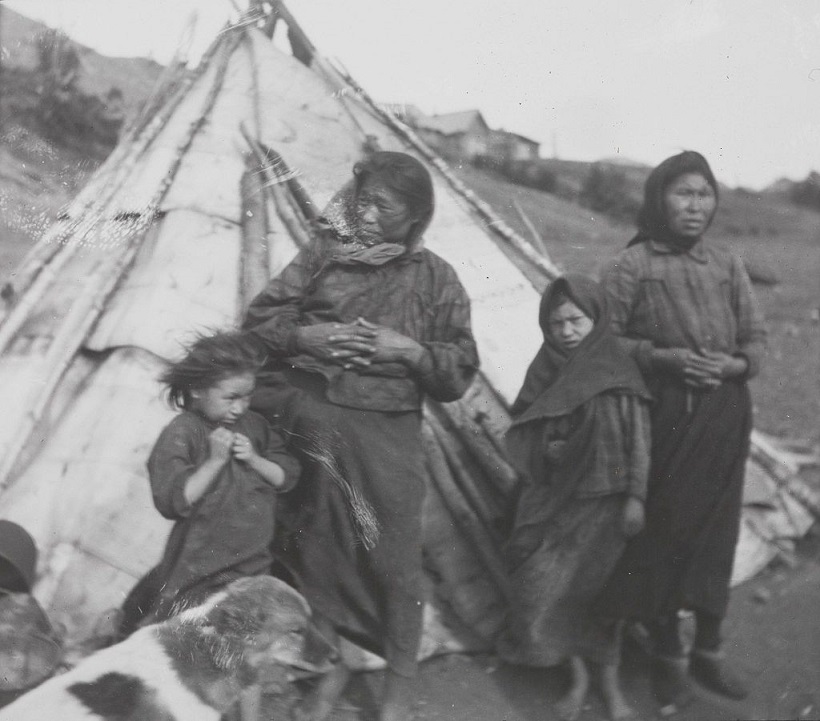
Ket people, 1913
The Algonquian people are connected mostly by language. See the map below. There
obviously had been some displacement from a larger area in the distant past, mostly in
Canada. They're not a great culture by American standards, compared to the Aztecs or
Incas, but they did have agriculture and archaelogy continues to reveal more about them.
The lifestyle of Algonquians changed when they adopted farming, as was
the case with any people. That probably occurred in the vicinity of Virginia, and our
line settled down to live in one place in the relatively recent past, clearing out areas
for hunting game generation after generation rather than following it wherever it went.
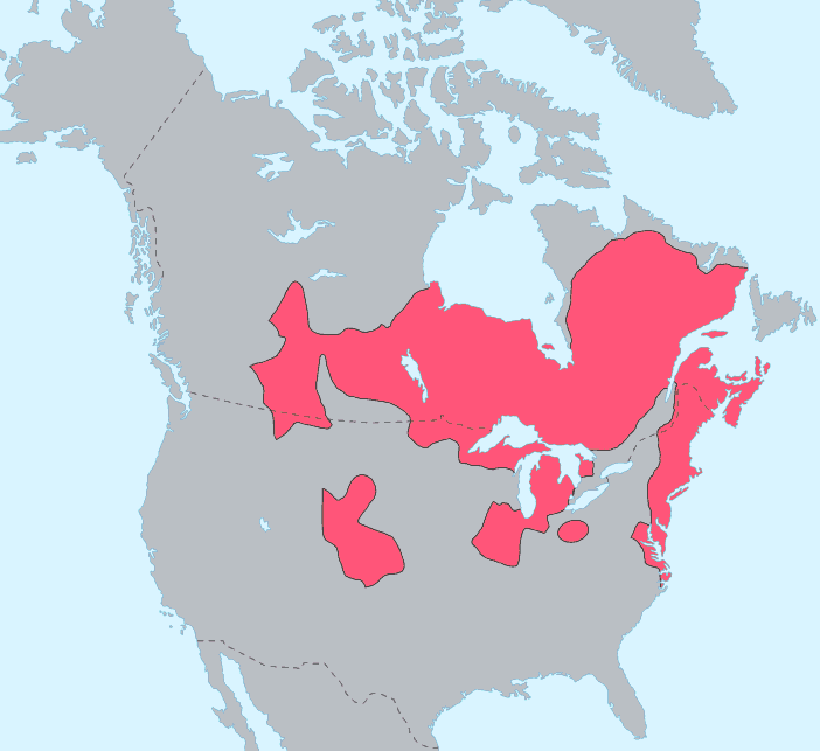
Estimated area of Algonquian language speakers in 1607
Our line were nomadic hunter-gatherers before that, going back to human origins in Africa.
Our Tapps have been tested as Y-DNA Q-M3, one of the dominant haplogroups in the Americas.
There are competing theories about how these peoples crossed from Asia to North America.
The timing seems to correspond with the receding of glaciers combined with lower sea
levels that created the land bridge posthumously called Beringia in the area of Alaska.
But there is also evidence of migration along the coast all the way to South America.
Q-M3 emerged from Q1 about the time our line was in Beringia 15,000 years ago.
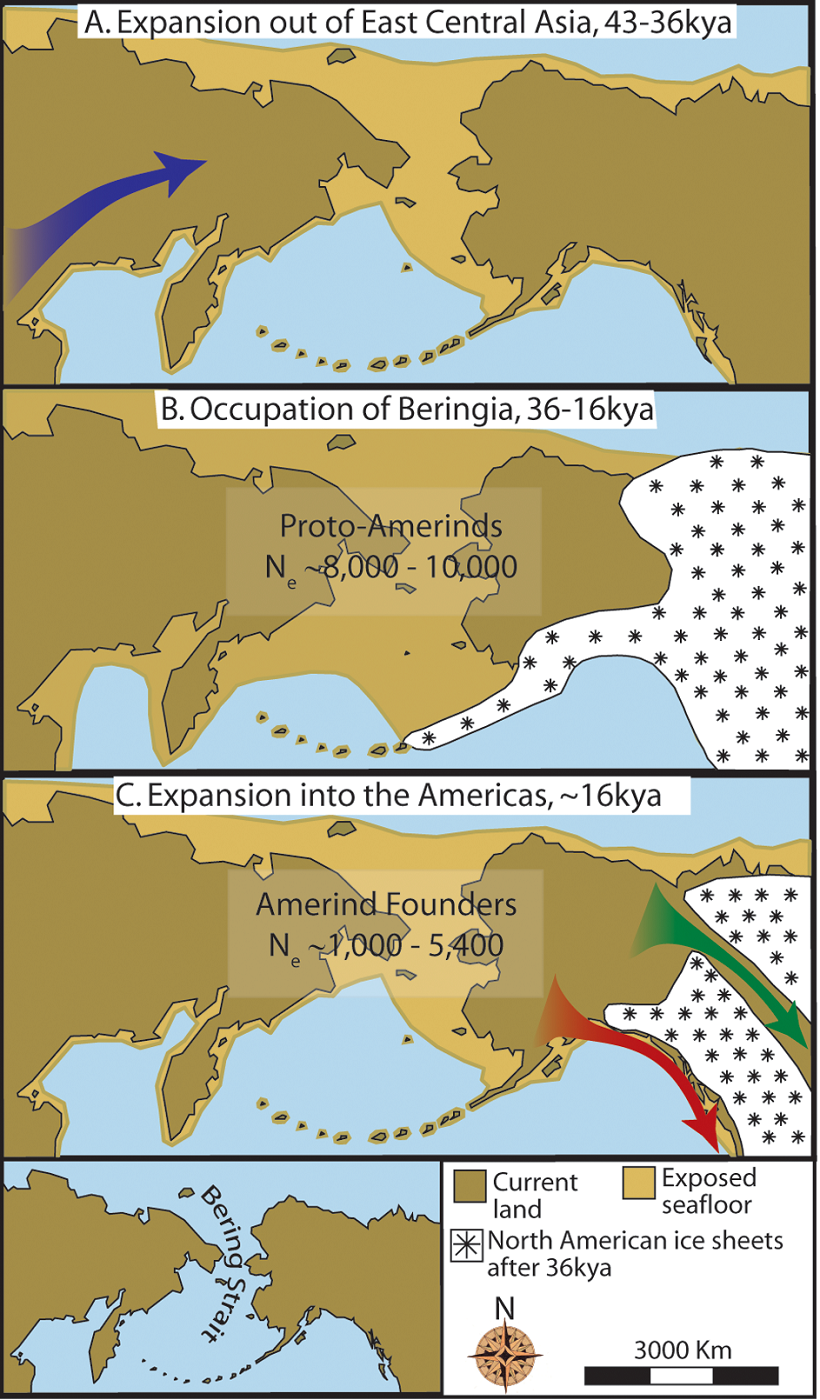

See a map of the distribution of haplogroup Q1 above. It originated in the Altai (central
Asia) about 25,000 years ago. The "hot spot" north of there is the homeland of the Ket.
Now look at the map of Y-DNA paths below. It's very interesting to me that the Q haplogroup
and the R, the European haplogroup, emerged from a common ancestor about 40,000 years ago.
Actually, quite a few R's joined the Q's going to the Americas. I've included a couple more
maps below, one of the path of all migrations, and another from a different perspective, of
mitochondrial movement. I hope to leverage mitochondrial DNA in the story of my ancestors
someday to anywhere near the extent I've been able to use Y-DNA.
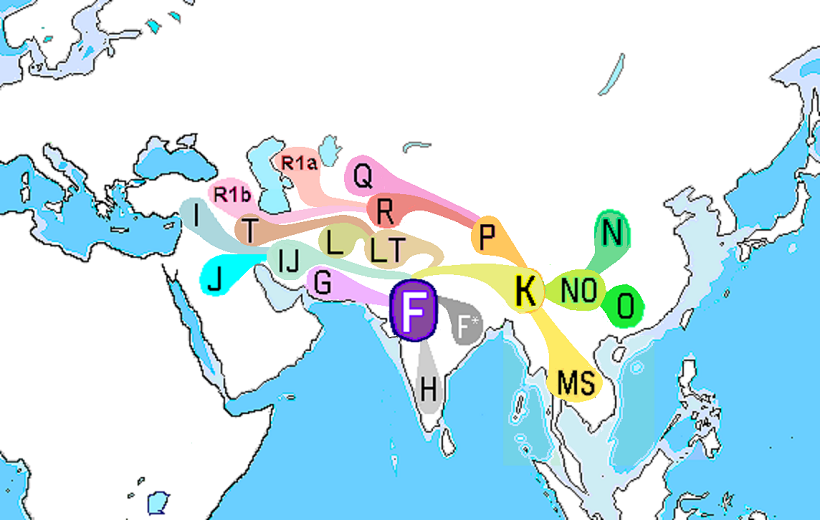
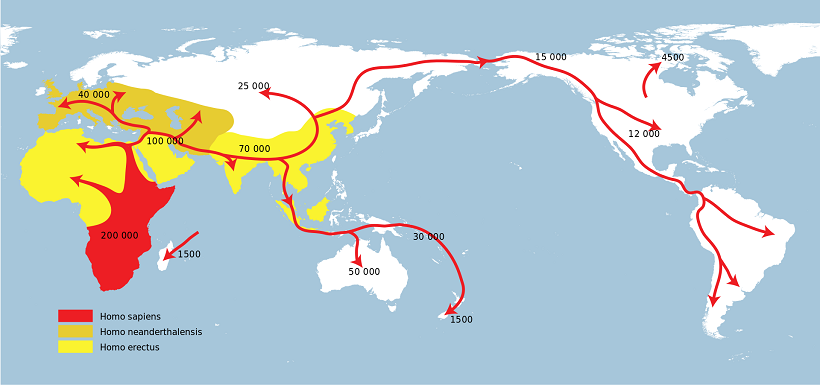
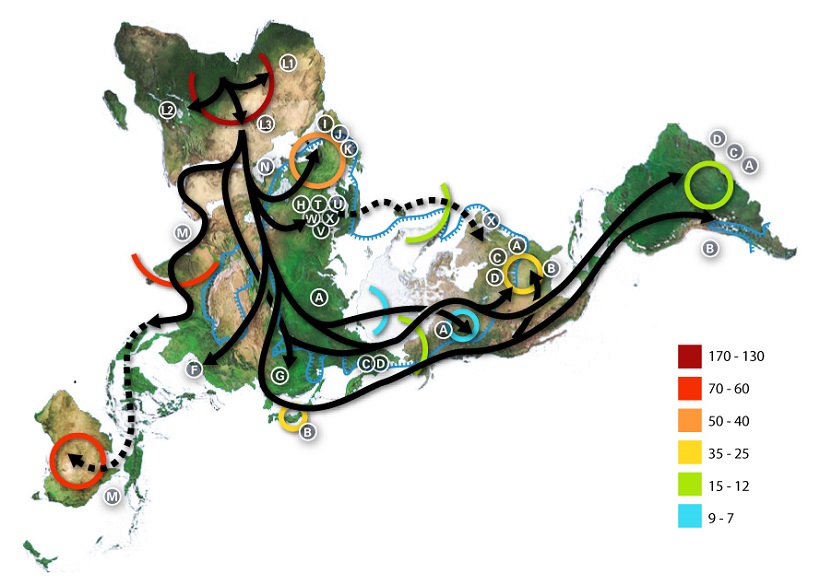
Migration of mitochondrial DNA
Keep in mind that our deep ancestors didn't know what lay ahead of them. They didn't set
out to find the southern tip of South America. They didn't know the summer would ever
come again in some places. They roamed randomly for the most part, following animal herds
and better climes. As humans always have, they came to new lands looking to improve their
fortunes.
Mattie Tapp's other Great-Great-Grandparent Lines
In the last phase of this document, I collect all that I know about the non-Tapp paternal lines of the great-great-grandparents of my great-great-grandmother, Mattie Tapp. Refer to the McAtee Pedigree page for a simple view of Mattie's ancestors.
Wade
Curtis S Tapp's mother was Nancy Wade, born 1802 in Franklin County Georgia. Nancy's father was Isaac Wade, born 1776 in Halifax County Virginia. He moved through the Carolinas to Georgia and was an active soldier during the War of 1812. Isaac's father was Henry Wade, born 1740 in Hanover County Virginia. Henry's father was also named Henry, born 1689 in New Kent County Virginia. Henry Sr's father was James Wade, born 1665 in New Kent. James's father was Edward Wade, born 1640 in York County Virginia. Edward's father was also named Edward, born 1611 in London England. Wade is said to be a patronymic surname, from Wade as a first name. The Wade DNA project doesn't include first names so I can't identify our connection to it. The majority are of haplogroup R-M269, so I have to guess that. Presumably this was an Anglican line. The Wades were slaveholders.
Casey
Mary Tapp's mother was Nancy Casey, born 1805 in Franklin County Georgia. Nancy's father was John Casey, born 1775 in Newberry County South Carolina. John's father was Levi Casey, born 1752 in Botetourt County Virginia. Levi has his own wikipedia page, because he was a congressman. Wikipedia claims that he was born in South Carolina, but his father moved there around 1760. The Newberry area was Cherokee territory in 1752. Levi became a brigadier general in the South Carolina militia in the Revolutionary War. He was a member of the South Carolina senate and House of Representatives, as well as a justice in Newberry in the period 1781 to 1799. In the 1802 election he won a seat in the US congress in Washington DC and began service in 1803. The first congress in DC had been three years previous. Wikipedia says he was a Republican, but he actually was part of the Democratic Republican party, which eventually became the Democratic party. The opponent party at that time was the Whigs. Levi died 1807 in office and was buried in the Congressional Cemetery in DC. Levi's father was Abner Casey, born 1700 in County Tyrone Ireland. If I didn't know the family was so prominent, I would've assumed they were Catholic, as Casey is a native Catholic name. But the Caseys must've converted, or adopted the name, because Levi was buried in the Presbyterian section of the Congressional Cemetery. I don't believe that poor immigrants had the opportunity to become brigadier generals back then, no matter how heroic their deeds. I've found no evidence of slaveholding, but I surely expect that they were. Descendants have been tested as Y-DNA haplogroup R-M269.
Bache
Moses Tapp's second wife was Mary Bache, born 1760 in Culpeper County Virginia. The name Bache isn't pronounced like German Bach, but rather like Baesh. Mary's father was Richard Bache, born 1723 in Worcestershire England. I expect this line was well-off and likely slaveholders. Presumably they were Anglican. There seem to be no Bache DNA tests known, so I have to guess this line was of Y-DNA haplogroup R-M269.
Powell
Nancy Wade's mother was Phoebe Powell, born 1778 in Wake County North Carolina. Phoebe's father was Moses Powell, born 1730 in Isle of Wight County Virginia. Moses's father was John Powell, born 1695 in Isle of Wight. John's father was also named John, born 1670 in Isle of Wight. John Sr's father was William Powell, born 1640 in Isle of Wight. William's father was also named William, born 1605 in Suffolk England. It took a lot of work to sort this out, especially Moses's wife. See the Symes section below. The surname Powell actually is an English corruption of ap Howell, so it derives from Hywel Dda. The Howell line on the Scott side was actually Norman and became naturalized Welsh. It's not clear at all what our Powell line Y-DNA was. The two options from the Powell DNA project seem to be I-M253 and R-M269. If the former, then this line is like the Howells. If the latter, then they may be more Welsh and actually descended from Hywel Dda. Info for the immigrant has him coming from a town called Powelltor in Sussex England. If that has any validity, there's no such place today. I've found no evidence of slaveholding. Presumably they were Anglican.
Payne
Curtis W Tapp's mother was Polly Payne, born 1780 in Caswell County North Carolina. Polly's father was John "Red Bank" Payne, born 1754 in Halifax County Virginia. John's father was Thomas Payne, born 1721 in Middlesex County Virginia. Thomas's father was William Payne, born 1685 in Westmoreland County Virginia. William's father was John Payne, born 1651 in England. This was a line I had to use ThruLines to fill out. The only lead I had from ancestry.com was that Curtis's mother's name was Mary. Polly is a nickname for Mary. My educated guess at her maiden name came from an 1823 tax list of Franklin County Georgia. In it I found a Joseph Parham, a Joseph Payne, a James Perry, a John Chambers, an Abraham Williams, a Benjamin Page, a Samuel Morgan, and a Daniel Bennett as neighbors and peers of John W Tapp and thus prospective fathers of Mary. I started with Parham and found no fit. Then I proceeded to Payne and found John Payne born 1754 and died in Franklin County Georgia. John seemed like a decent fit, so I put him in and waited for ThruLines to find matches. It was a slam dunk. I now have 48 matches for John and 54 for his wife. They had a daughter called Polly, so as I said, knowing that's a nickname for Mary, I chose her. They had no other daughter named Mary. John was called Red Bank because his mother Judith was purportedly a full blood native. Her tribe seems to have been the Piankatank of Middlesex County Virginia, which was part of the Powhatan confederation. So, this is a third native line in this tree, where if Judith was 100% Piankatank, and she was my grandfather's 6th great grandmother, then Payne is a stronger DNA connection to the Powhatan than both Tapp lines combined. The Paynes were considerable slaveholders. Presumably they were Anglican. Descendants have been tested as Y-DNA haplogroup I-P37. This is part of I2, which is believed to have entered Britain as hunter-gatherers, long before farming was brought to the isles. The surname Payne was brought to Britain by the Normans.
Pace
Nancy Casey's mother was Elizabeth Pace, born in 1782. This line moved rapidly after the
Revolutionary War, from Virginia to Georgia, and it's not clear where Elizabeth was born.
Her father was Barnabas Pace, born 1743, probably in Charles City County Virginia. His father
was Richard Pace, born 1699 in Charles City. Richard was the third of that name in a row in
this line, so let's call him Richard III. Richard II was born 1665 in Charles City. Richard
I was born 1638 in Charles City. His father was George Pace, born in 1609, claimed by
previous researchers to have been in Jamestown. I'm doubtful about that, but he certainly
was born not far from Jamestown. George's father was one of the more famous ancestors we
have, Richard Pace born 1580 in Middlesex England. Richard Pace is famous for having warned
Jamestown of the impending massacre of 1622. Pace established a plantation that he called
Pace's Paines. See the photo below of the sign at the site of his plantation today, which
tells the full tale.
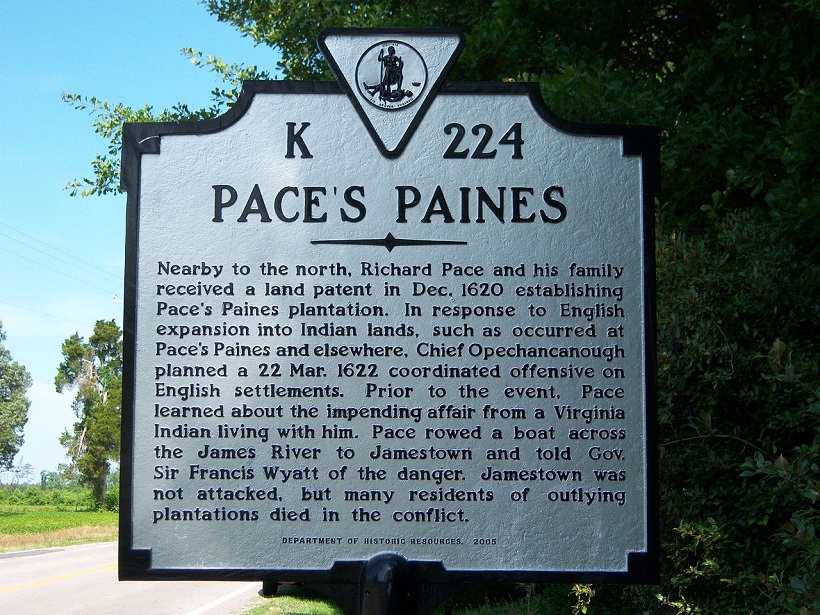
So, we don't have a connection to the first settlers of Jamestown, but this is about as close
as you can get. Richard Pace was killed by natives five years after the massacre. It was a
dangerous life for the early settlers of Virginia. The name Pace is said to be related to
'peace' and came to England with the Normans. Presumably this line was Anglican. Barnabas
was a Revolutionary War soldier. The Paces were considerable slaveholders. Descendants have
been tested as Y-DNA haplogroup R-M269.
Jett
Vincent Tapp's wife was Mollie Jett, born 1728 in Culpeper County Virginia. Mollie's father was John Jett, born 1695 in King George County Virginia. John's father was also named John, born 1666 in Rappahannock County Virginia. John Sr's father was Peter Jett, born 1633 in London England. The surname Jett is said to come from Angers France and was planted in England by the Normans. Presumably this line was Anglican. They lived too long ago to know if they were slaveholders. I've found no Jett Y-DNA information, so I have to guess they were of haplogroup R-M269.
Knowles
Mary Bache's mother was Rebecca Knowles, born 1723 in Worcestershire England. The surname Knowles comes from a placename, a knoll or hill. It originated in Yorkshire. I make the standard assumptions here about an English line.
Turner
Isaac Wade's mother was Lucy Turner, born 1744 in Hanover County Virginia. I don't know who her father was. An Edward from Philadelphia is a candidate. It's also possible that she came from the Turner line in the Hollis tree that was in Isle of Wight County. ThruLines returns only one match for Lucy, and can't identify her parents. The surname Turner was an occupation, from a French word. The name came to England with the Normans, but it doesn't mean our line came from Normans. I treat this as a standard English line.
Symes
Phoebe Powell's mother was Elizabeth Symes, born 1746 in England. In terms of documents, it's impossible that this is true. But ThruLines insists on her, with lots of matches. All of those matches say that Phoebe was a half-sibling of all others of Moses Powell's children. Ancestry.com hints suggest that Phoebe's mother was Sarah Fugate, but ThruLines returns no matches for her, and as I said, insists on Elizabeth Symes. All information on Elizabeth is that she was born in England and never left. I've also tried Prudence Garner as Phoebe's mom, I don't remember why, but she gets no matches either. One of Moses's children has surname Prater with Sarah Fugate as mother, so I guess that was an adoption. I go with ThruLines here, but this is an unsolved mystery.
Thornton
Moses Tapp's first wife was Elizabeth Thornton, born 1760 in Caroline County Virginia. Elizabeth's father was Anthony Thornton, born 1727 in Caroline. Anthony's father was also named Anthony, born 1694 in Stafford County Virginia. Anthony Sr's father was Francis Thornton, born 1651 in King George County Virginia. Francis's father was William Thornton, born 1622 in England. The name Thornton comes from a town of that name, which was descriptive of having thorn bushes. I make the standard assumptions here about an English line, save that descendants have been tested as Y-DNA haplogroup I-M253. This means either a Norman or Viking origin.
Hensley
Red Bank Payne's wife was Ann Hensley, born 1757 in Goochland County Virginia. Ann's father was Mackfield Hensley, born 1726 in Goochland. Mackfield's father was William Hensley, born 1691 in Henrico County Virginia. William's father was James Hensley, born 1642 in Northampton County Virginia. James's father was also named James, born 1605 in Devon England. The surname Hensley is from a town of that name. I make the standard assumptions here about an English line, but like the Thorntons, Hensley descendants have been tested as Y-DNA haplogroup I-M253.
Duckett
Levi Casey's wife was Elizabeth Duckett, born 1759 in Frederick County Maryland. Elizabeth's father was Jacob Duckett, born 1714 in Prince George's County Maryland. Jacob's father was Richard Duckett, born 1672 in London England. The surname Duckett comes from Duket, and I don't know if it was English or French in origin. I make the standard assumptions about an English line here. Descendants have been tested as Y-DNA haplogroup R-M269.
Aycock
Barnabas Pace's wife was Agnes Aycock, born 1757 in Bertie County North Carolina. Agnes's father was James Aycock, born 1735 in Orange County North Carolina. James's father was William Aycock, born 1705 in Prince George County Virginia. William's father was James Aycock, born 1685 in England. Now, I've seen Agnes have a claimed association with Jamestown, so it could be that the eldest James came from there and not England. But Barnabas was also associated with Jamestown, and we know the Paces came from there, so the Aycocks may have no direct connection. The name Aycock comes from haycock, a bird associated with hedges. I make the usual assumption about an English line here. That said, there is an Aycock DNA project, and descendants have been tested as haplogroup J-M172. The name is said to have originated in Berkshire England, which is in the south of the country. I believe that J-M172 in my Scott line came from Syria with the Romans, but there's no such connection to southern England. I have to believe that the Aycocks came from a neolithic farmer, which is the standard explanation for how J-M172 came to Britain.
Summary of Mattie Tapp's Great-Great-Grandparent Lines
The first thing to note about Mattie's ancestors is the Tapp name carried cache into South
Carolina, wedding into prominent lines. That comes with prosperity, and in the south that
meant slaveholding. I've confirmed or strongly suspect that five of the sixteen lines were
slaveholders. But though I don't have evidence for the others, I'm certain the majority were.
Mattie's ancestors were three quarters Anglican English. Of course the two Tapp lines were
native American. The one Irish line produced the congressman. The two Tapp lines' religion
was that of the Powhatan, which I haven't researched. In terms of DNA this tree was about
half R1b, the standard western Europe Y-chromosome. This is the one part of our family with
men named in it that have Q-haplogroup Y-DNA. Every native American line eventually traces
thus, but deeper in the tree than the Tapps. Mattie's ancestors had a quarter also from the
I and J haplogroups.
Migration paths
Tapp: 1875 Lafayette, Crawford, Arkansas - 1854 Frick's Gap, Walker, Georgia - 1848 Broom Town Valley, Chattooga, Georgia -
1825 Carnesville, Franklin, Georgia - 1795 Spartanburg, Spartanburg, South Carolina - 1755 Culpeper, Culpeper, Virginia -
1720 Warsaw, Richmond, Virginia - 0 Heathsville, Northumberland, Virginia
Wade: 1800 Carnesville, Franklin, Georgia - 1770 Halifax, Halifax, Virginia - 1720 Hanover, Hanover, Virginia -
1660 New Kent, New Kent, Virginia - 1635 Hampton, York, Virginia - 0 London, London, England
Casey: 1760 Newberry, Newberry, South Carolina - 1745 Roanoke, Botetourt, Virginia - 1725 Baltimore, Baltimore, Maryland -
0 Tyrone, Tyrone, Ireland
Powell: 1770 Raleigh, Wake, North Carolina - 1630 Isle of Wight, Isle of Wight, Virginia - 0 Powelltor, Sussex, England
Payne: 1800 Spartanburg, Spartanburg, South Carolina - 1780 Yanceyville, Caswell, North Carolina - 1750 Halifax, Halifax, Virginia -
1680 Montross, Westmoreland, Virginia - 0 Frittenden, Kent, England
Pace: 1800 Carnesville, Franklin, Georgia - 1635 Charles City, Charles City, Virginia - 1608 Jamestown, James City, Virginia -
0 Wapping, Middlesex, England
last edited 9 Sep 2022
